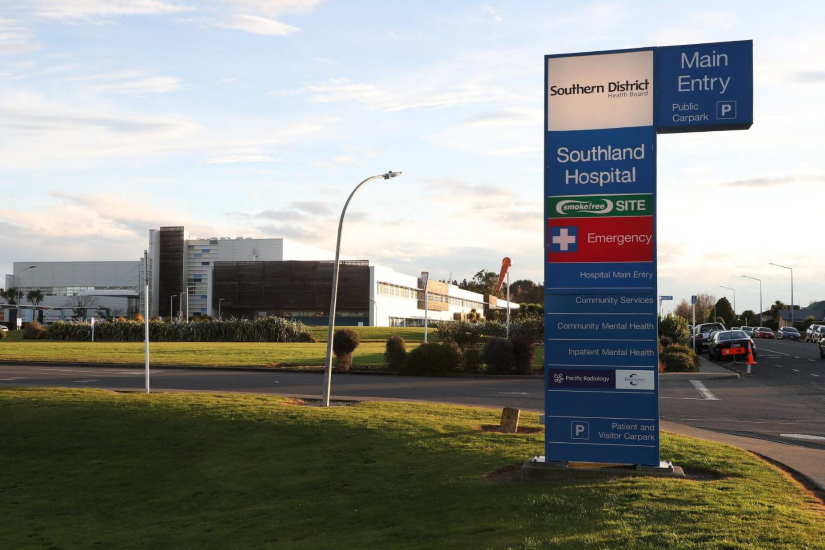Case Studies
Southern DHB sets cloud migration strategy for future healthcare

Developing the blueprint for the future of healthcare in New Zealand, Southern DHB lays out their cloud migration journey.
Southern District Health Board (SDHB) faced significant challenges in 2020, both in terms of health emergencies and continuing to provide essential health services.
In an environment where it could have been easy to do what was comfortable, they pivoted and decided to use the pressures of change to modify their business with a move to Cloud based technologies, and they are now well placed to not only manage what the future will bring but to create a whole new way of delivering health care to their communities.

“Together we have achieved a significant step on the journey to having the agile, robust and efficient platforms and practices needed to take us into the future of digital healthcare.”
Andy Crossman
Technology and Services Manager, Southern DHG
2020 for many organisations presented permanent disruption to business as usual. For SDHB, the onset of the COVID-19 pandemic presented significant challenges for the region with two large clusters originating with 216 people being infected and resulting in two deaths.
In parallel to managing an unprecedented public health issue, the DHB was dealing with a transition to new governance, working to develop a strategic framework to deliver healthcare for the communities it serves into the future. Two of these strategic goals particularly focused on developing systems for success and facilities for the future – enabling a new hospital in Dunedin as well as progressing community health hubs. To support this work, they initiated mapping of the digital requirements of the future health system.
All of this has been accelerated during the COVID-19 lockdown periods which have demanded greater use of technology to meet the health care needs of the community.
The technology roadmap
Previously, SDHB followed a traditional hardware refresh model through rolling replacements every few years. During the last refresh cycle, they took the opportunity to adopt CCL’s infrastructure as a service (IaaS) platform instead of purchasing new hardware for on-premises use. This in turn broke the cycle of hardware recycling, and as with most DHBs across the country, nonproduction hardware then aged to a point that it was increasingly difficult and expensive to maintain.
The DHB had to determine whether to invest further in replacement hardware or take the opportunity to consider modern options for data management and storage that would well position them to develop the digital health system, to enable the future ‘paper light’ hospital and community health developments. As a first step in this digital map Microsoft Azure Cloud was selected, with a requirement to complete migration by end of June 2021.
To support this migration, SDHB looked for a provider that could take care of everything ‘up to and including the hypervisor’, allowing them to focus on the systems that are most important to them as a health provider.
Working with Spark Health to support the digital health journey
Spark Health provides a dedicated digital health service for health organisations across New Zealand. They act as a single point of contact that sources expertise across the Spark group, finding the right solutions to help clients achieve their business objectives. During the decision-making process Spark Health’s Client Director for SDHB, Ben Walker, continually kept informed with progress so that they were ready to pull resources together when needed.
To initiate planning for the transition to Azure, Spark Health brought in the Leaven team (now CCL, part of Spark Business Group) to facilitate workshops with a cross section of SDHB staff to determine and evaluate what the move to cloud would look like. This planning phase takes a measured approach – evaluating each server and workload in the current state, then developing new ways of working which is aligned to the cloud technology.
This detail is vital to successful cloud migration to ensure the crucial foundations are in place to support a cloud-based organisation. “Not every cloud has a silver lining for every business, and the best fit for your organisation may be different to others depending on your existing infrastructure and workload types,” said Will Reedy, then-CEO of Spark Health.
Mike Walls, then-Director Cloud Transformation at Leaven agreed, “Cloud is a journey, and the sooner that we can align the technology priorities with what the organisation wants to achieve, the sooner we can bring together the key stakeholders and work towards the desired outcome.
“We know that people and processes also need to be taken into consideration – in addition to the technology. Our local team worked to understand the requirements of SDHB and built a trusted working partnership, giving us a great platform to not only deliver the desired technology and business outcomes, but provide enablement and direction for the future along the way.”
Once a strong and clear plan for the project was in place, the project team worked closely with Microsoft and SDHB to prioritise outcomes and deliverables to ensure the migration was achieved on time and within budget. Adopting an Agile approach, regular stand-ups, strong lines of communication and information sharing, and having SDHB included in the project team ensured there was a clear understanding of requirements and what SDHB was required to do on their side to enable a successful delivery.
“The people were the X factor in this project,” says Ben Walker, Spark Health Client Director. “The right balance of knowledge and skills was brought in and the right contacts within SDHB were included. There was talented technology leadership to support knowledge sharing, and suggest new ways of doing things.” SDHB’s objective was to improve the speed and quality of their current environment and approach.
Terraform was employed to develop an Azure landing zone leveraging their infrastructure as code. This landing zone acts as the foundation for the blueprint, ensuring success in the future. Leaven are currently working to expand this scope to further to migrate and refactor existing workloads with high requirements for automation and security. The SDHB Infrastructure team has tackled the new technology with gusto, embracing Terraform and using it to drive forward their ability to deliver repeatable, scalable and rapid results for the DHB.
Infrastructure as Code (IaC) significantly speeds up the pace a business can develop infrastructure at. For example, the time it takes to build servers and install software is now done in a few minutes just through running a script. Also, where a server is not built correctly, it can be rebuilt in minutes – not only saving time, but enabling the team to focus on higher value activities.
Following development, a testing phase was completed to ensure the Azure environment was stable and reliable. Latency testing was conducted between Dunedin and Melbourne as well as robust security tests to ensure the highest levels of protection of SDHB’s data. Technical Architect at SDHB, Craig Young shares the benefits that he sees leveraging the breadth of expertise across the wider Spark Group — with a focused Spark Health client director managing their needs and specialist expertise sourced from CCL.
“It’s quite rare to find technical experts with sufficient experience in this area that can provide a mature advisory service. Good service, great people.” The right people combined with the right resources, armed with a blueprint for success, the project ran smoothly with the team successfully navigating the migration of a large number of legacy servers with minimal impact to SDHB users.
Andy Crossman, Technology and Services Manager, Southern DHB, credits the team with the efficient delivery of this foundational piece of work. “It was considerably beneficial having the expert advice of Spark Health and CCL assisting our teams in adopting the modern practices of provisioning, configuring, and managing our Digital infrastructure as code. Together we have achieved a significant step on the journey to having the agile, robust and efficient platforms and practices needed to take us into the future of digital healthcare.”
The boundary-free horizon at the bottom on the world
SDHB are continuing their drive to modernise the future of healthcare for their region, building on the strong but scalable foundation they now have in place. They are continuing to work with Terraform to ensure that they fully utilise the benefits of Cloud. CCL is continuing to partner with the SDHB to build a repository of code and support the upskilling of the internal team so that they are comfortable working with Terraform as the default method for deployment in Azure.
The overall goal for the future is to receive level 6 accreditation from the international HIMSS (Healthcare Information and Management Systems Society) best practice benchmarking system. More importantly, these digital advances will enable more convenient and accessible care, shorter and more comfortable hospital stays, and equitable health outcomes – a top of the world experience for those living at the very bottom of the globe.
More Case Studies
QLDC deploys Azure landing zone framework
CCL’s best practice framework for Azure puts Queenstown Lakes District Council on the road to work-from-anywhere future.
KMD Brands summits AWS Cloud
KMD Brands is adopting AWS Cloud with the help of Leaven to simplify connectivity, reduce overheads, and strengthen IT confidence for its three retail brands.
ANZCO Foods applies computer vision to lighten the load
Custom iPhone app and computer vision create a new class of machine for meat exporter ANZCO Foods.


